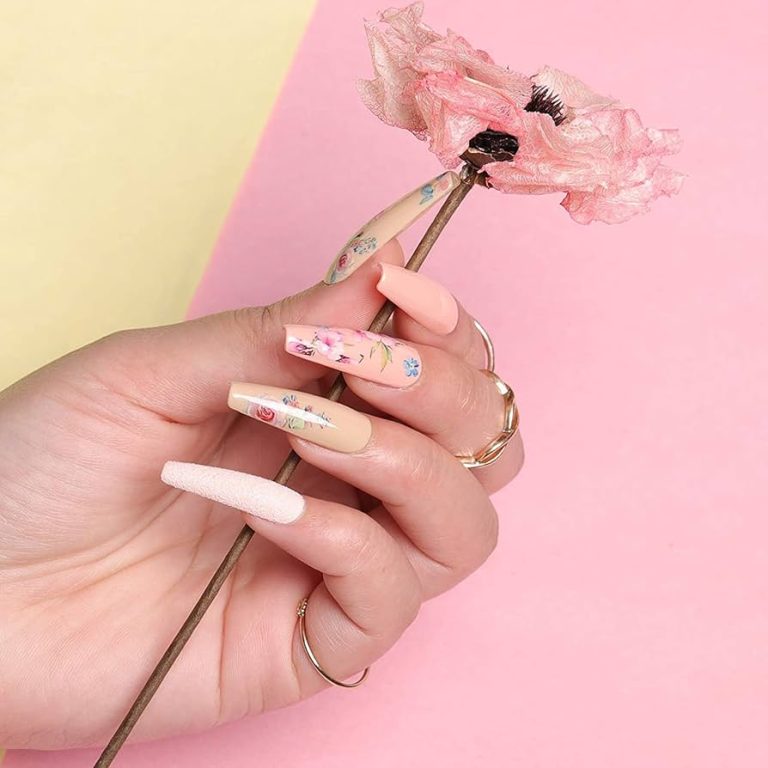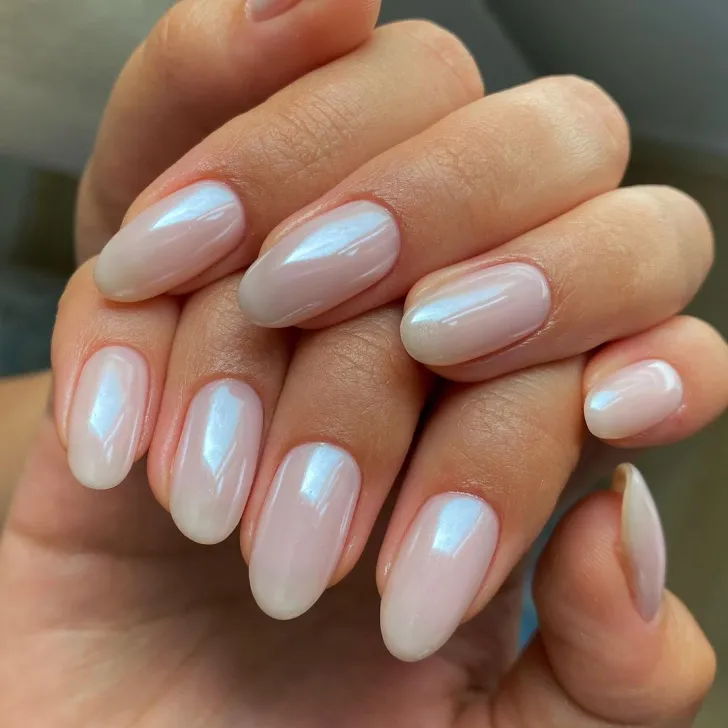
Does Gel Polish Compromise Nail Health?
Does Gel Polish Ruin Your Nails?
Gel polish has become a popular choice for achieving long-lasting manicures. Many people enjoy its glossy finish and durability. However, concerns often arise about its impact on nail health. Understanding the advantages and disadvantages of gel polish is essential for nail care enthusiasts.
In the ever-evolving world of beauty, gel polish has emerged as a game-changer for nail aficionados, providing long-lasting color and a glossy finish that can withstand the test of time. However, as its popularity skyrockets, so do questions about its safety and potential damage to natural nails. Is gel polish a friend or foe to your nail health? For many, the allure of chip-free nails that can look perfect for weeks is irresistible, but the concerns about long-term effects often leave a lingering worry in the back of their minds. In this blog post, we delve deep into the impact of gel polish on natural nails and uncover whether it’s a stylish indulgence or a potential detriment to your nail health.
Many fans of gel polish may argue that it offers unparalleled convenience. Unlike traditional nail polish that often chips within days, gel polish can last up to three weeks or more, allowing for a hassle-free manicure. However, this hardiness comes with a cost. The process of applying gel polish typically involves using an LED or UV lamp to cure and harden the coating, creating a robust finish that can be tough to remove. Consequently, the removal process, often involving soaking nails in acetone, can lead to dehydration of the nails and cuticles, making them more brittle and prone to splitting and breaking.
Moreover, the physical removal of the gel polish can contribute to nail thinning and damage if not done correctly. This is why it’s essential to visit trained professionals who can safely apply and remove gel polish. It is also worth noting that excessive use of gel polish can hinder the natural regeneration of nails, leading to an unhealthy appearance over time.

Understanding Gel Polish Application
Gel polish application involves several steps. First, nail preparation is crucial. Technicians file and buff the nails, creating a rough surface for adhesion. Next, a base coat is applied to protect the natural nail. This base coat acts as a barrier against potential damage. After the base coat, the gel polish is applied in thin layers. Each layer is cured under a UV or LED lamp for a shiny finish. Finally, a top coat seals the gel and enhances its longevity.
While this process creates a beautiful look, it can also lead to negative consequences. The first risk arises during nail preparation. Over-filing or buffing the nails can weaken their structure. Consequently, this may result in thinning and increased brittleness. Additionally, people often choose to remove gel polish at home without proper techniques. This can lead to further damage, such as peeling or breaking of the nails.
To minimize damage, proper application and removal techniques are vital. Professionals should always handle the preparation and curing process. Regular breaks between gel applications can also help maintain nail health. Alternating with traditional polish, for instance, allows nails to recover. This strategy reduces the chances of long-term damage, promoting stronger nails.

The Impact of UV Light
The use of UV light in gel polish application raises concerns for many consumers. Prolonged exposure to UV radiation can pose various health risks. For instance, excessive UV exposure can diminish skin health and lead to premature aging. Additionally, excessive exposure increases the risk of skin cancer. Therefore, understanding the potential consequences of UV light during gel application is important.
However, nail salons typically use UV or LED lamps designed for safety. LED lamps produce less UV radiation than traditional lamps. Alternatives to traditional gel polish also exist, reducing reliance on UV exposure. For example, newer gel products are available that do not require UV light. These alternatives can minimize risks associated with UV application while maintaining lasting results.
Moreover, individuals can take precautions to protect their skin. Applying sunscreen or UV-blocking products to the hands before treatment can cushion against harmful rays. Additionally, using protective gloves, while impractical in many salons, serves as a viable option. These strategies can substantially reduce UV-related risks while enjoying beautiful nails.
Nail Weakness and Brittleness
Many users report issues with nail weakness and brittleness after using gel polish. The constant application and removal process can take a toll on nails. Indeed, nails may become fragile, leading to breaks and splits. Brittle nails can cause frustration, leading to a cycle of damage and repair.
To combat this issue, proper care during and after gel polish application is essential. Using high-quality products and tools can prevent excessive damage. Additionally, incorporating strengthening treatments into the nail care routine can help. For instance, nail strengtheners and oils can rehydrate and nourish nails, promoting recovery.
Taking breaks between gel applications is crucial. These breaks provide nails with time to rejuvenate and regain strength. During the break, individuals can use conditioning treatments to restore moisture levels. With proper care, nails can recover from the rigors of gel polish applications and maintain their integrity.

Allergic Reactions and Sensitivities
Allergic reactions and sensitivities can also arise from gel polish use. Some individuals may develop skin irritations or rashes after application. These reactions can stem from various chemicals within gel formulations. Formaldehyde, toluene, and other harmful ingredients can cause issues for sensitive skin.
Those with pre-existing sensitivities should seek hypoallergenic gel options. Many brands now offer formulations specifically designed for sensitive users. Additionally, patch-testing new products helps identify potential allergic reactions before full application. This proactive approach can prevent discomfort and ensure a positive experience.
Furthermore, individuals should communicate any sensitivities with their nail technicians. A knowledgeable technician can recommend safe products and techniques. Ultimately, careful selection of gel polish products can mitigate the risks of allergic reactions.
The Role of Proper Removal Techniques
Proper removal of gel polish is as vital as the application process. Incorrect removal techniques can lead to severe damage to the natural nail. Using acetone to soak off gel polish requires a gentle approach. Excessive scraping or buffing can wreak havoc on nail health.
To ensure safe removal, individuals should seek professional assistance. Nail technicians are trained to remove gel polish effectively and with care. If removal at home is necessary, it is vital to follow recommended procedures. Using a gentle buffer and soaking in acetone can minimize nail damage.
After removing gel polish, giving nails time to recover is essential. Applying cuticle oil or moisturizer aids in restoring hydration. Continued care post-removal can help mitigate any dryness or brittleness experienced beforehand. By prioritizing safe removal techniques, individuals can maintain the health of their nails.
Alternatives to Gel Polish
Those concerned with the potential harm from gel polish may want to explore alternatives. Various nail treatments can provide comparable durability without the risks associated with gels. For instance, regular nail lacquer typically lacks the harsh chemicals found in gel formulas. Traditional polish offers ease of removal without damaging the nail structure significantly.
Another option is the use of dip powder nails. Dip powder offers longevity similar to gel polish, albeit with fewer potential health risks. The application process does not involve the same harsh exposure to UV light. Additionally, proper removal techniques help preserve nail health while achieving vibrant looks.
For those seeking healthier options, there are also eco-friendly nail products available. Many brands prioritize natural ingredients, reducing the likelihood of irritation or damage. These alternatives align with conscious consumerism while ensuring nail aesthetic remains vibrant and lively.

Maintaining Nail Health
Maintaining nail health is essential for anyone using gel polish. Adopting a comprehensive nail care regimen can prolong the health of natural nails. Regular manicures help keep nails neat and healthy. Furthermore, keeping nails trimmed and filed can prevent breaks or snags.
Applying strengthening treatments can also contribute positively to nail health. Products rich in vitamins and minerals nourish the nail bed. Incorporating cuticle oil and moisturizing creams boosts hydration levels. This additional care makes nails less prone to brittleness.
Good nutrition plays a significant role in nail health as well. A balanced diet with essential vitamins supports strong and healthy nails. Foods rich in biotin and omega fatty acids promote overall nail strength. Staying hydrated is equally essential, as water affects nail appearance and strength.
Conclusion: Informed Decisions About Gel Polish
Gel polish offers a beautiful and long-lasting manicure option. However, understanding its impact is vital. Gel polish can affect nail strength and health, particularly if not used correctly. The application and removal process require careful consideration to mitigate potential damage.
While many individuals enjoy the aesthetic benefits of gel polish, they must also prioritize nail care. Learning about alternatives allows consumers to make informed decisions. Exploring different products and techniques can promote healthier nails.
Ultimately, responsible use of gel polish combined with proper care will yield the best results. By staying informed and cautious, individuals can enjoy beautiful nails without compromising their health. Taking the time to care for nails ensures they remain strong, healthy, and vibrant for years to come.

